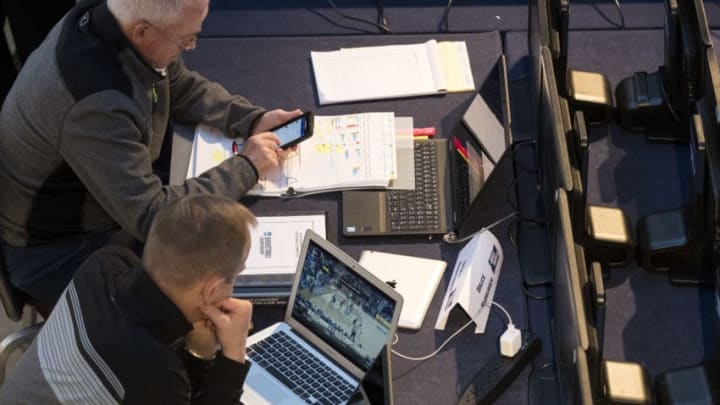When it comes to NCAA Basketball, issues when it comes to scheduling have caused problems on Selection Sunday. Here’s a unique way to change that.
Over the past few seasons, the NCAA Selection Committee has done a good job at making what they do more transparent. They have allowed media members to join in mock committees for example, and this past year they talked to some of the best analytical minds in the sport to try and tweak the metrics that they use and even try to come up with a universal metric that they can use going forward. Over the summer they announced another slight change where road wins will carry slightly more weight than home victories in the eyes of the committee this season.
These are all positive steps for the committee and their selection process but one major hurdle still exists that greatly impacts that process, the scheduling chasm between the haves and the have-nots in college basketball.
Every selection Sunday people talk about the reason why mid-majors x,y, and z didn’t make the field and the answer is almost always, ”they didn’t win enough high-profile games”, while a middling high major team who has two or three times as many opportunities at high-profile games makes the field.
More from NCAA Basketball News
- NCAA Basketball Recruiting: Analyzing top 5 teams for top-100 SG Larry Johnson
- NCAA Basketball Recruiting: Analyzing top 5 teams for 4-star PG Jeremiah Johnson
- NCAA Basketball Recruiting: Analyzing top 8 teams for 5-star SF Annor Boateng
- NCAA Basketball: 4 head coaches who needs to win big in 2023-24 season
- NCAA Basketball: Top 15 head coaches on the rise entering 2023-24 season
While the committee tweaks its process, scheduling is actually the biggest hurdle in getting the best teams into the tournament. For a few years, ESPN had the Bracket Buster event which thrust mid-major teams into the spotlight. The problem was those teams would play each other, thus giving one of them a potentially resume crushing loss before March.
To close the scheduling gap I propose the solution of using the new metric rumored to be adopted by the NCAA and pitting the top 10 conferences by that metric against the middle 10 in an ACC/Big 10 Challenge type format.
How it Would Work
Annually:
- Using the metric a top 10 conference would be randomly matched up with a middle 10 conference.
- Once those matchups are set, randomly match up teams within those conferences so that every team from a middle 10 conference gets a game with a team in the top 10 conference it is matched up with.
- This process should be done early enough so any top 10 conference team without a game in this process can fill its schedule if need be.
- The randomization will be repeated if needed so that there are no repeat matchups in back-to-back years.
- Each resulting game would have a five-year window to complete a home-and-home series.
Logistics:
- Games will be played at all NCAA Tournament sites for that year (or future years if there are scheduling conflicts).
- Games will be played in Mid-February much like the Bracket Busters.
- Games will be played at the most geo-centric venue to both teams.
- Games will be played with doubleheaders on Thursday and Friday and tripleheaders on Saturday and Sunday as needed.
- Gate money for the games will be split four ways with money going to each conference as well as each institution.
What happens to the bottom 12 conferences each season? If they agree to they would be randomly matched up using the same process and play each other, beginning a home-and-home series that would have the same five-year window to complete.
Next: 2018 NBA Mock Draft after college decisions
I know there are probably logistical flaws I missed and getting conferences and schools to agree to something like this is an astronomical longshot but this would at least close the scheduling gap just a little and address the underlying issue that impacts the selection process the most.
